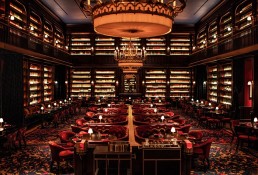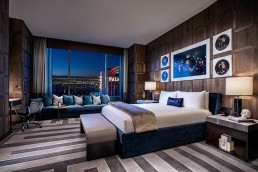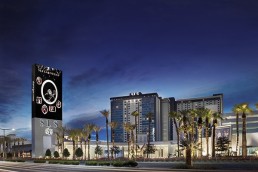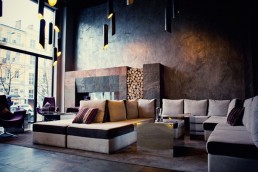REVIEW: NoMad Las Vegas
What comes to mind when we think of Las Vegas hotels? There will be a casino, of course, and a wide pool of restaurants and bars to reduce the need to ever leave.There is perhaps a theme, to which the hotel sticks stubbornly to, regardless of whether the Trevi Fountain and Michelangelo’s David ever actually shared a city, and there is likely a four-figure room count to serve an almost constant flow of tourists eager to spend. The visuals will arguably be brash and loud in a reflection of the strip’s bombast, and despite the best efforts of designers and operators, they might still all blur together from a guest perspective, playing second fiddle to the decadence of Sin City.
This is not a slight, rather the observing of a formula that has proved wildly successful for decades now, one that has seen the strip’s hotels become a defining cultural and commercial element for city and state alike, perhaps more so than anywhere else in the world. Breaking this mould is a tall order, and whilst new additions may claim to offer a new angle or do things differently, the nagging sense remains that, at their core, Las Vegas hotels will largely stick to the same five-billion-dollar-producing script until the desert sun gets too hot or the pockets of 42 million yearly tourists turn out empty. However, whilst this formula might be the set template for the colossal big hitters, for the foreseeable future at least, there has been some tinkering here as to what luxury looks like in recent years.
Along with Park MGM – of which NoMad Las Vegas occupies the top four storeys in the first hints of an unconventional approach – Sydell Group’s Sin City outpost perhaps best represents what is possible within the established parameters of the local market without sacrificing the quintessential Vegas experience.
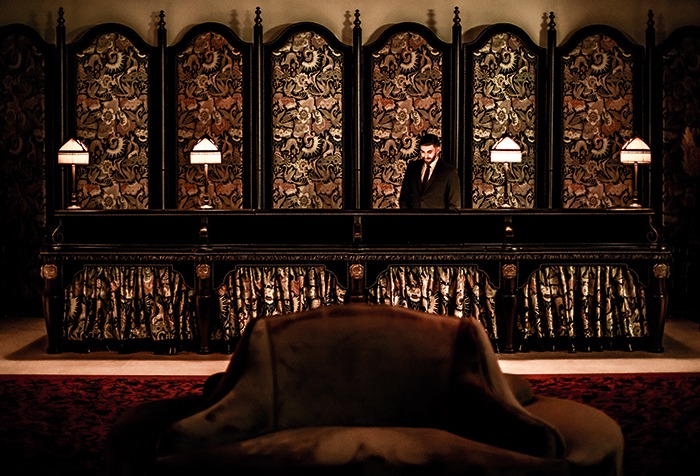
“Our goal was to bring the unique culture of NoMad to Las Vegas,” explains Andrew Zobler, CEO, Sydell Group. “The NoMad brand has always been at the intersection of old-world style and service, with a modern sensibility and an element of fun, and this time we turned more toward our playful side.”
From the understated, quietly confident welcome set on the strip’s quieter rear side, to an intimately composed take on the Las Vegas casino to a library-style restaurant stacked high with leather-bound books, NoMad Las Vegas eschews the expected aesthetic of the area’s mainstays in favour of something entirely different, yet appropriate for the context and built atop familiar foundational touchstones.
“The main design challenge was to transplant the original product from a historic New York building to an entirely different type of structure across the country,” says Paul Taylor, Founding Partner, Stonehill Taylor. “With the location being in Las Vegas, the scale was much bigger, and as such we looked again at original NoMad concepts like the elegant restaurant and the library bar to recreate them in a grander scale.”
Classy without the baggage of pretention, seductive while avoiding overindulgence, the project is an exercise in refining maximalist extravagance into something more subdued, a tailored fit for guests unconvinced by indoor sky projections and plaster imitation monuments. Designing the NoMad retreat above the Martin Brudnizki-envisioned Park MGM, Jacques Garcia has ensured that, whilst functioning as part of a coherent whole with shared touches of art, colour and texture, his work ensures a distinct character for the former. The MGM is fresh, lively and light, whilst NoMad is the atmospheric, brooding counterpart with a different idea of fun.
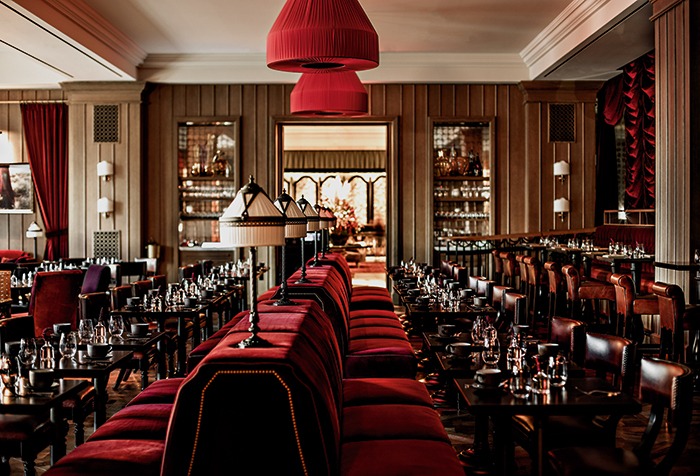
“There is a family resemblance between the two, but they are not twins,” Zobler explains. “The NoMad experience is more French in inspiration and the Park MGM is more English. NoMad has its own established point of view, which has been adapted for Las Vegas and the casino.”
Indirect Dernier & Hamlyn lighting casts shadows off the mid-century, paisley-print screens backing the check-in desk, welcoming guests to a lobby punctuated by rich velvet armchairs atop a royal red carpet spread with floral variations. Stately mouldings, columns and arches by Stonehill Taylor frame the main thoroughfare and spill into the NoMad Restaurant – overseen by Chef Daniel Humm and restaurateur Will Guidara – wherein floor-to-ceiling shelves housing 25,000 books – not least the personal collection of David Rockefeller, margin notes intact – red leather banquets, an 18th-century fireplace and a spiral staircase sourced and imported from France combine for a ground floor centrepiece.
A scaling up and spiritual successor to NoMad New York’s Library restaurant, the space draws significant inspiration from the high-rolling aesthetic surrounding it as well as the brand’s own legacy and historic points of reference like The Royal Portuguese Cabinet of Reading in Brazil.
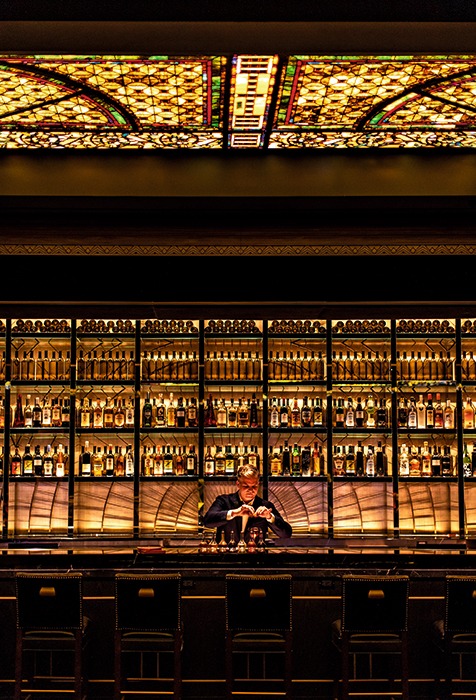
Two bars – the adjacent NoMad Bar and its casino-set opposite number – channel Vegas opulence in their own distinct ways; the former’s velvet and mahogany textures are complemented by rustic Havwoods flooring and illuminated by natural light, whilst the latter’s high-rolling roulette, blackjack and baccarat tables are bathed in an amber glow from the iconic Tiffany glass ceiling salvaged from the former Monte Carlo. The casino marks the first such venue within the brand’s portfolio, and sees a new string to the Sydell bow. “It’s an intimate casino that in every way feels integrated into the NoMad experience, as opposed to it being its own separate venue,” Zobler adds.
293 guestrooms at the upper reaches of the building eschew a cookie-cutter approach for consistently surprising residential spaces, some with the open-plan layout of metropolis apartments where others – like the Suite Royal Premier – see the spaces divided into bedroom, dining, game, bar, and foyer components, linked by winding hallways within hallways, with no two pieces of the Be-Poles-curated art hung in both NoMad and Park MGM guestrooms the same.
Like Garcia’s interiors, the art draws from a familiar set of references. “The overall design draws inspiration from the natural surroundings; from the desert and the glamour of Las Vegas,” Zobler notes. “The art depicts the desert and the strip, as seen through the NoMad lens, whilst the colour palette was drawn from the natural terrain that surrounds the city. We have sought to blend the desert and the strip as inspirations with a sophisticated, playful urbane character that you experience in the prior NoMad locations.”
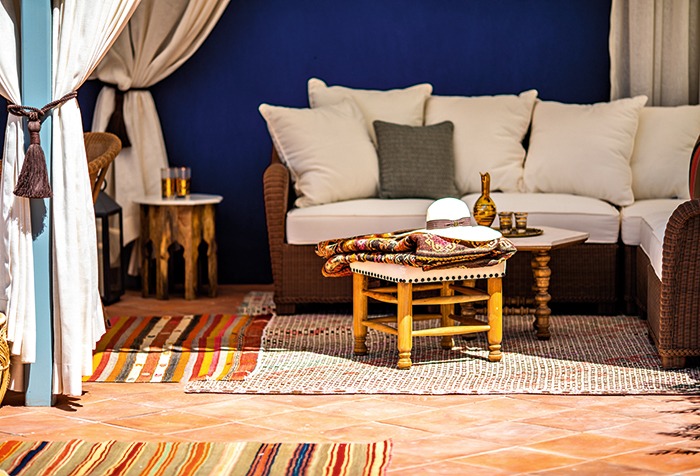
The offer is rounded out by the NoMad Pool – an elevated terrace dotted with white loungers, arched cabanas, wicker chairs and ethnic rugs – where Garcia translates the botanical landscape of Morocco’s Majorelle Gardens for guests seeking out a moment of peace amidst the flashing lights and whirring slots. An encapsulation of the hotel’s defining style – one foot in the decadence of its surroundings, the other planted far away to step out into the world beyond city limits – the pool and wider hotel speak of changing attitudes towards the design of luxury experiences in Las Vegas; less the overindulgent fear and loathing of the rapidly ageing giants surrounding it, more confident and comfortable in its own style and direction.
The brand’s willingness to eschew the established and expected in favour of its own signature stamp has been observed before, but the strategy is at its most prominently effective in Las Vegas – the hotel not so much rejecting its surroundings outright, rather simply demonstrating that there is another way.
Words: Kristofer Thomas
Images: © Benoit Linero
This review originally ran in Sleeper 85.
Related Posts
17 November 2015
Starwood signs SLS Las Vegas
3 December 2012
